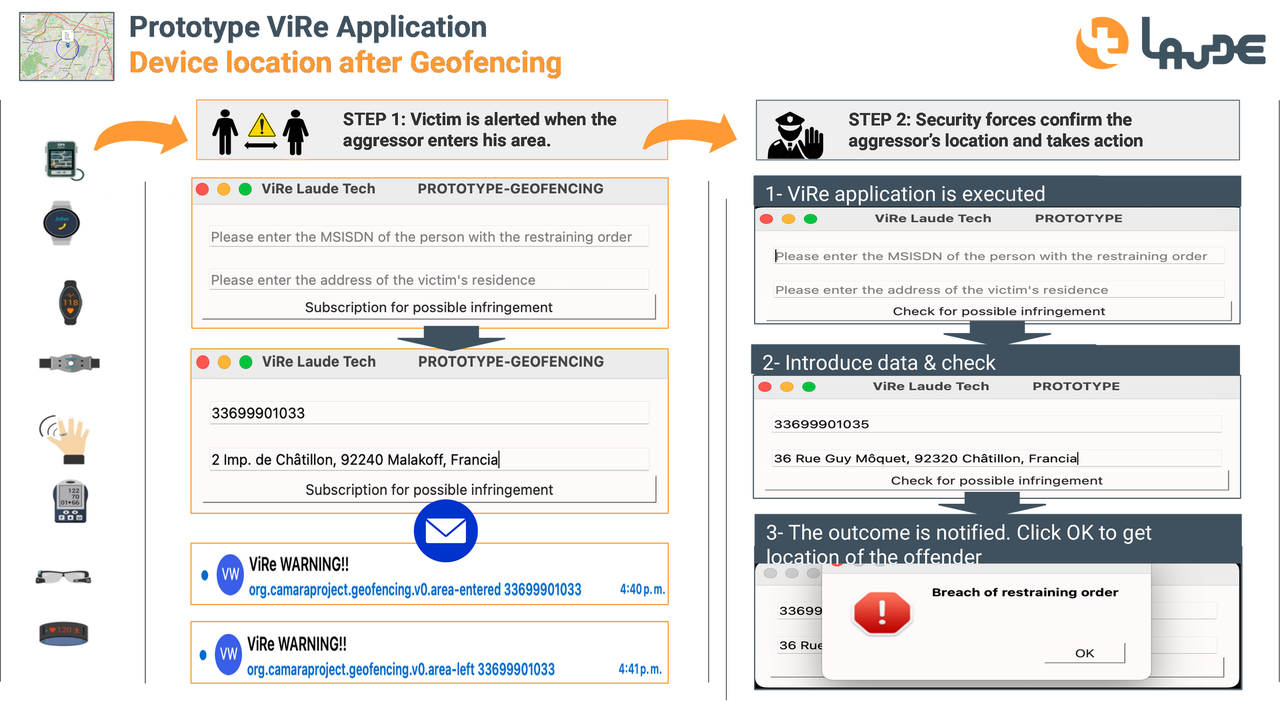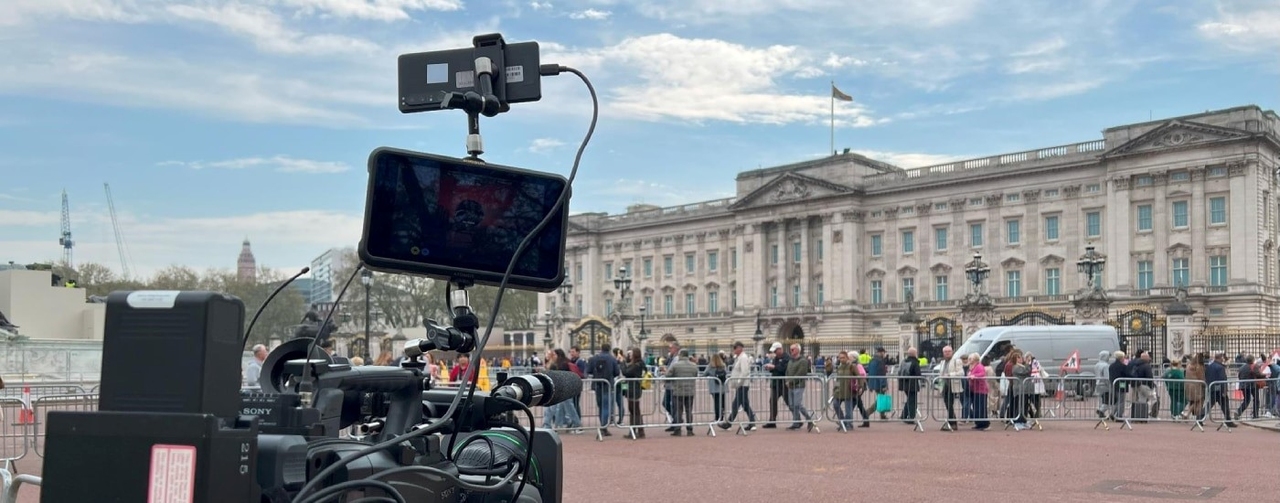The ideas and inspirations below can serve as a starting point for your creative journey with the Camara API. Feel free to draw inspiration from them, expand on them, or take a completely different direction to create something truly unique! You're not limited to the examples below—explore all available APIs in the open CAMARA standard repository on GitHub 🚀
Inspiration 1: How can you use the Camara SimSwap API?
An API that enables real-time verification of whether a user's SIM card has been swapped, serving as a critical defense against fraud involving hijacked accounts secured by SMS verification codes.
Why it's cool: this solution provides developers with direct access to telecom operator data regarding SIM security—something that was previously almost impossible or required complex integrations with each operator separately.
How can it be used in a real-world scenarios
1. Fintech applications – Preventing Fraudulent Transactions💡
Consider the following scenario:
- A user attempts to transfer a large sum of money.
- Before sending an SMS verification code, the bank's app checks via the SimSwap API whether the user’s SIM card has been recently swapped.
- If a SIM swap is detected, the app triggers additional verification steps or temporarily blocks the transaction to prevent potential fraud.
2. Strengthening Security for Sensitive Logins💡
Consider a large enterprise where employees handle confidential client data. A cybercriminal tries to bypass 2FA by swapping an employee’s SIM card. Without any detection mechanism, they could infiltrate the company’s systems. With SimSwap API integrated, any suspicious SIM changes are flagged, and access is immediately blocked or redirected to a more secure verification method, preventing data breaches.
Inspiration 2: Unlocking dynamic network optimization with Quality-on-Demand (QoD) API
QoD API is an API that allows applications to dynamically request higher network quality at critical moments, ensuring prioritized traffic for selected connections between a mobile device and a service.
With QoD API, applications can dynamically boost connection quality exactly when needed.
How can it be used in a real-world scenarios
1. Telemedicine App – Ensuring Seamless Virtual Consultations💡
Imagine a rural patient consulting a specialist via video call. Without QoD, fluctuating network conditions might lead to poor video quality, lag, or even call drops, making remote diagnosis difficult.
- When a user starts a video consultation with a doctor, the app automatically requests a higher priority connection.
- This ensures stable video quality, reducing lag and interruptions crucial for accurate diagnosis.
- Once the consultation ends, the connection priority returns to normal, preventing unnecessary bandwidth consumption.
By integrating QoD API, the app ensures a crystal-clear connection precisely when it matters most, without requiring expensive dedicated infrastructure.
2. Multiplayer Gaming App – Reducing Lag in Competitive Matches💡
Think of a professional esports tournament where a fraction of a second determines victory or defeat. Without QoD, congested networks could cause lag spikes, ruining the player's reaction time. With QoD API, the game automatically activates high-priority network access, ensuring ultra-low latency exactly when it's needed most.
- When a player enters a tournament match, the API boosts the priority of game data traffic.
- This minimizes latency, prevents packet loss, and provides a smoother gaming experience.
- After the match, the priority automatically returns to standard, ensuring fair network resource distribution.
Inspiration 3: Leveraging Population Density Insights
The Population Density Data API provides real-time and future density estimates for specific areas, using anonymized mobile device data to support urban planning, emergency response, and targeted marketing.
By integrating the API, applications can access timely population data to optimize decision-making in critical sectors like city development and resource management.
How can it be used in real-world scenarios
1. Emergency Response - Drone Medicine Delivery💡
In crisis situations, medical supplies need to reach high-density areas quickly. The Population Density Data API helps optimize drone flight paths, using real-time data to enhance delivery efficiency and comply with formal government flight regulations.
- Real-time population data assists in planning the most efficient flight routes by targeting high-density areas while avoiding congestion.
- The data also enables formal notifications to government bodies, facilitating the necessary flight permissions based on current population trends.
- By integrating the Population Density Data API with drone systems, emergency teams can ensure compliance with regulations while optimizing delivery efficiency during medical emergencies.
2. Urban Planning - Optimizing City Infrastructure💡
The Population Density Data API helps city planners predict growth, providing real-time and future estimates to guide infrastructure development.
- The API offers insights into current density levels, ensuring targeted infrastructure projects where most needed.
- Forecasted data helps plan for future growth, ensuring roads, transport, and utilities are built effectively.
By using this API, urban planning becomes proactive, ensuring cities evolve to meet the demands of growing populations.
Inspiration 4: Public Safety & Disaster Response
During natural disasters, fires, or mass gatherings, or large-scale accidents, first responders (paramedics, firefighters, police, and disaster relief teams) may struggle with unreliable communication due to:
- Network congestion (too many people using mobile data in the area).
- Poor GPS accuracy (GPS is unreliable indoors and in certain terrains i.e. tunnels or underground structures).
This communication breakdown delays emergency responses, putting lives at risk.
Think of a solution that:
- Use CAMARA API to prioritize emergency responders' network traffic in congested areas and ensure stable & high-speed connectivity
- Enable real-time video calls, data sharing, and live coordination for rescue teams.
- Integrate precise telecom-based location tracking to locate emergency personnel faster.
Camara API in Action: Practical use case
- ViRe Project
In a world where feeling safe shouldn’t be a privilege, technology has the power to make a real difference. Traditional restraining orders depend on legal enforcement, but what if technology could add an extra layer of protection—offering real-time monitoring and instant alerts when it matters most?
ViRe project utilizes telecom operator capabilities, accessed through Camara APIs, to ensure a safe zone for victims, free from aggressors. If a perpetrator breaches the restraining order, an emergency SMS alert is immediately sent to both the authorities and the victim. Additionally, law enforcement agencies have real-time access to the monitoring system, allowing them to track the locations of both the aggressor and the victim at any moment.

ViRe isn’t here to replace electronic bracelets—it’s here to take security to the next level. By tapping into 5G network capabilities from telecom operators, ViRe works both indoors and outdoors, creating a safe zone spanning several kilometers where victims can move freely without fear. Plus, since it’s built on the Camara standard, there’s no need for special devices—it works with almost any smartphone, any operator, and in any country.
More about ViRe project: https://developer.orange.com/customer-stories/laude-innovates-with-vire-app-for-enhanced-restraining-order-monitoring/
2. Summit Tech: VR360 live streaming with QoD
Users expect reliable and seamless performance from mobile applications. However, network congestion, fluctuating signal conditions, and infrastructure limitations can lead to delays, decreased service quality, and user frustration.
Summit Tech has developed a unique live streaming platform that leverages Quality on Demand to deliver a premium experience for both content creators and viewers. By ensuring stable and fast connections regardless of network load, the platform maintains consistent performance even under challenging conditions.
This is especially critical for virtual reality applications, where every millisecond counts. Odience by Summit Tech is a versatile platform, perfectly suited for streaming fashion shows, music concerts, sporting events, and more.
Partner Insights - message from Sony
Dynamic Optimization of 5G Networks for Live TV Productions
For cellular networks to be effectively used in live productions, they must reliably transmit video signals from all cameras with millisecond-level latency. Despite the high performance of 5G networks, several challenges still need to be addressed.
The volume of data that must be transmitted in real-time often significantly exceeds the network's bandwidth capacity. An uncompressed HD video signal requires over 3 Gb/s, and many productions involve multiple cameras, sometimes using even higher 4K resolutions. Moreover, the nature of IP-based networks like 5G is not inherently suited for the reliable transmission of video with consistently low latency. This issue becomes more pronounced when there is high competition for network bandwidth due to the connection of multiple devices, including numerous cameras.


Sony and Nevion, leaders in IP technology for the television and media market, are collaborating with partners worldwide to develop new optimization solutions for 5G networks. In 2024, Sony introduced a very low-latency HEVC codec capable of compressing video at a ratio of approximately 1:200 within milliseconds, allowing multiple high-quality video signals to fit seamlessly within 5G network bandwidth. The solution also includes Nevion’s VideoIPath network orchestration platform, which can dynamically adjust QoS in the RAN network via Quality on Demand (QoD) APIs to prioritize video traffic over other data, or even prioritize specific video signals, such as the one currently being broadcast.
Explore your own ideas!
The concepts and inspirations described can act as a foundation for your innovative work with the Camara API,
but don’t feel limited by these examples—experiment, combine different concepts, and showcase how the CAMARA API can serve as a foundation for building modern mobile applications!
Ready to go? Explore our APIS and technical documentation
Orange Developer Portal:
https://developer.orange.com/resources/quickstart/
NOKIA NaC:
https://developer.networkascode.nokia.io/docs/getting-started
Further reading - our customer storie
- Domos and Orange: Boosting Customer Experience with Network APIs - Orange Developer
- Orange & Nokia - Incident response built on Network API journey - Orange Developer
- Highlights from the Orange Network APIs Hackathon fall 24 edition - Orange Developer
- https://developer.orange.com/customer-stories/didit-obtaining-international-scalability-thanks-to-standardized-apis/
- https://developer.orange.com/customer-stories/how-quality-on-demand-api-enhances-live-streaming-vr-with-odience-platform/
Our landing page is still alive : Network APIs Hackathon - Empower Developers to Innovate